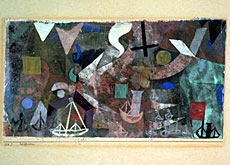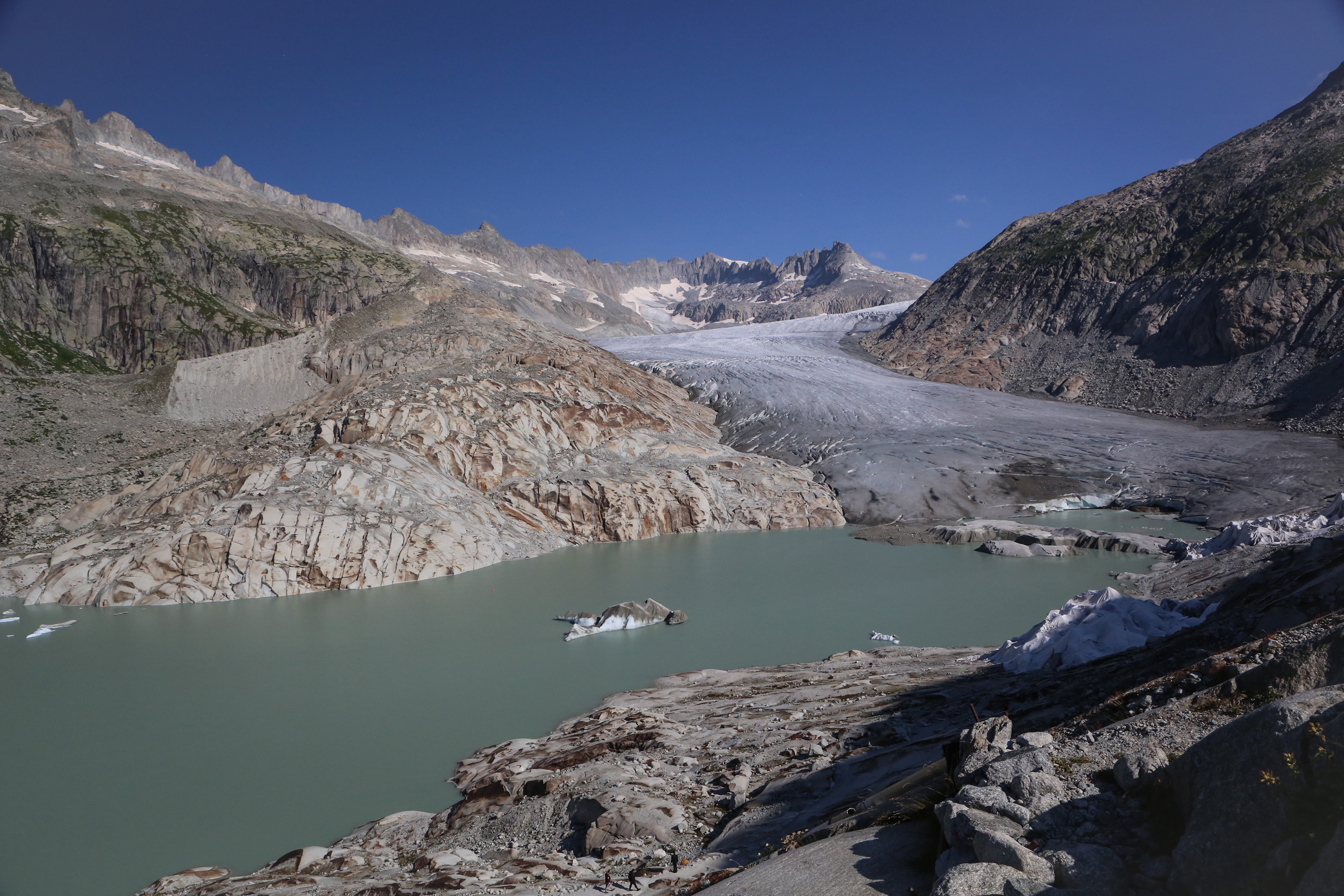A rational romantic

Paul Klee defined his style as "cold Romanticism" in the catalogue of his first major solo exhibition in 1914.
“Whereas Ingres imposed order on stillness, I am looking beyond pathos to impose order on movement,” he wrote.
To get the measure of Paul Klee’s abstract – or “cold” – Romanticism, let us examine a painting which typifies German Romanticism: “Wanderer above the Sea of Fog” by Caspar David Friedrich.
With his dynamic rendering of the clouds, rocks and mist of this mountain landscape, Friedrich expresses the pathos of a man alone in the face of creation and his yearning for the infinite.
This mystical theme, the strong bond between man and nature, is also prominent in Klee’s work.
In his paintings, however, it is not expressed in the form of realistic landscape but in geometrical shapes and arrows.
And we cannot but be aware of late-Romantic echoes in this sentiment penned by Klee as a young man: “I philosophise on death… the death wish, not as self-abandonment but as an aspiration to perfection.”
Thorough grounding
Klee grew up in an atmosphere impregnated by German late-Romanticism, which was ultimately based on a “rediscovery” of Greco-Roman culture.
However, direct study of the classics was also an important element in his training. Aged barely 20, Klee was in Rome meditating on the proportions of classical architecture.
For him, numbers and “magic” proportions, (also to be found in natural forms, from leaves to lichen, which Klee collected), did not imply coldness and detachment. On the contrary, they were full of life and he drew on them in developing his art.
For Klee, “classical art was the starting point of every modern artist, the foundation from which the artist must break away in order to create something new”, explains the art historian Michael Baumgartner.
As a draftsman, Klee was influenced above all by Goya, and by the expressionism of Ensor and Alfred Kubin.
Then, between 1908 and 1912, at exhibitions held in Monaco, he became acquainted with the works of Van Gogh, Matisse and Cézanne.
Of Cézanne, Klee wrote: “This man is the master, par excellence, much more so than Van Gogh.”
Organic creativity
We know that Klee became a painter only after exhaustive theoretical study, and years and years of more or less successful experimentation.
Decisive in his development were his encounters with other artists, such as Robert Delauney, a master of colour, and also of course with August Macke, Franz Marc and Wassily Kandinsky.
The ideas of the founders of the “Blaue Reiter” movement were akin to his own and, after years of more or less voluntary isolation, contact with other artists became very important in helping him develop.
What was true for Kandinsky, was also true for Klee: the artist must find his source of inspiration and originality in his own inner self – the child buried deep within, the sub-conscious mind, the wellspring of spontaneous creativity.
Artists inspired by Klee
Although Klee, unlike Kandinsky, was not the initiator of an artistic movement, many artists that followed have had to come to terms with his work.
His most obvious followers were Fritz Winter, Willy Baumeister, Max Bill and Otto Nebel.
“Many minimalist artists, like Sol Lewit, have followed the trail he blazed, but it is not so much his style as his ideas that have influenced modern art.
“Andy Warhol, for example, studied Klee’s writings in depth, but that is not to say he was influenced by them,” explains Michael Baumgartner.
These ideas include the high spiritual significance of artistic endeavour, and the poetic and meditative calm, which derive from artistic skill and creativity.
“The Surrealists regarded Paul Klee as one of their own; Picasso admired him greatly,” stresses Baumgartner.
Picasso was also of the opinion that every child is an artist, and that the artist is striving, his entire life, to return to childhood.
This concept is expressed in almost identical terms by Klee. And among the key influences on Klee’s art we must not overlook that of his own son, Felix.
Here, Klee was a non-conformist, and far ahead of his time. From the very beginning of his career, Klee chose the role of “house-husband”.
It was he who brought Felix up, while his wife was performing in concerts and teaching music abroad.
swissinfo, Raffaella Rossello
Klee bequeathed a cultural legacy, which no artist since has been able to ignore. The defining aspects include: the idea of spirituality in art; the search for inspiration in the unconscious mind, walking the tightrope between fantasy and reason; experimentation with form and colour; and the balance between abstraction and figuration.
Paul Klee was an assiduous student of art history throughout his career.
It was in reworking the impulses he received from the past, and from his contemporaries, that he developed his own pictorial language.

In compliance with the JTI standards
More: SWI swissinfo.ch certified by the Journalism Trust Initiative








You can find an overview of ongoing debates with our journalists here . Please join us!
If you want to start a conversation about a topic raised in this article or want to report factual errors, email us at english@swissinfo.ch.